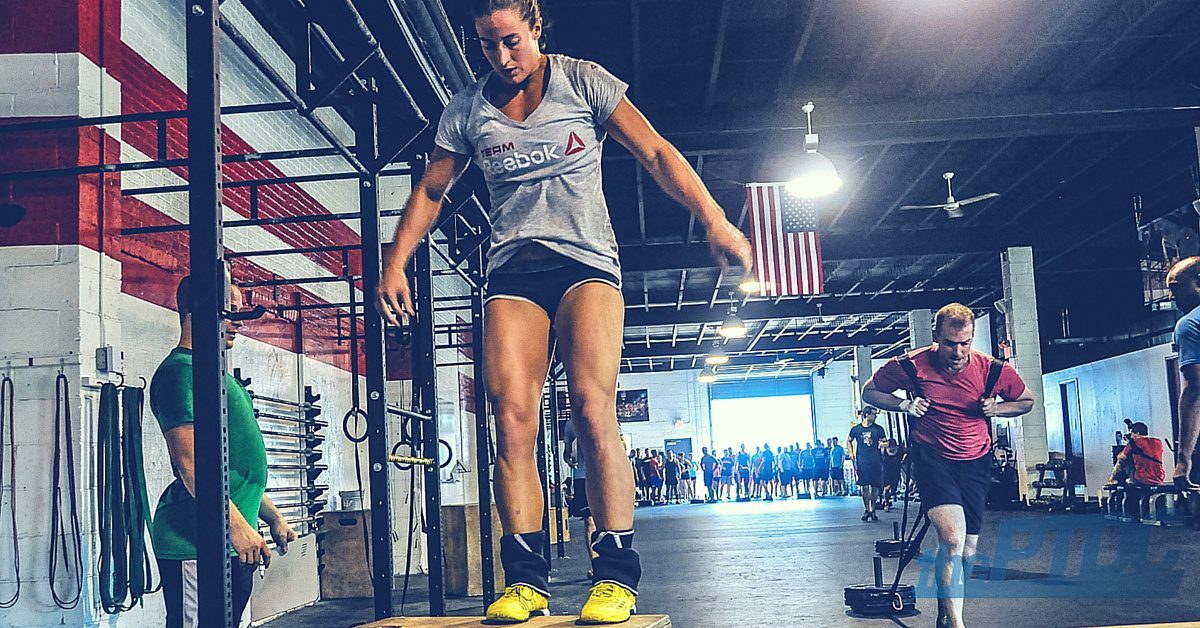There's a saying on the internet: "The First Rule of CrossFit: You Always Talk About CrossFit."
It's a play on Brad Pitt's speech in the movie Fight Club, and if you've watched the movie, the reference is both funny and true. After all, how many of your clients won't shut up about you?
I've got a few pushing good press for me, but hordes of clients? Scores? Devout legions? Nope (not yet anyway).
What is it about CrossFit that keeps people coming going back...and loving it?
The more I watched and the more I listened, the more I realized that CrossFit is a well-formed and robust culture--a community. As such, it gives participants a sense of belonging that Joe Trainer, CPT, from Corporate Gym rarely does, or can. Some of us may scoff at those knee-socks and Nano-bedecked guys and gals, but we can actually really learn from CrossFit's culture and apply some of what CrossFit gets right to traditional coaching and training.
CrossFit nails gym culture.
For one thing, CrossFit gets the gym culture right.
CrossFit knows how to make its members feel special and included. Not only does the CrossFit newbie get indoctrinated into a specific methodology in their workouts and programming, he gets a new group of friends or teammates.
On top of that, CrossFit has become synonymous with certain styles of food and drink (paleo and tequila), clothing (knee-socks and Nano), facial hair (just grow a beard already), and certain jargon and lingo ("WOD", "Box", "Fran", etc.). All of these help to reinforce a solid, CrossFit-only identity--so CrossFitters can't help but feel as if they belong to something bigger and grander.
This is why people come back.

Knee socks don't matter in and of themselves, but they're a part of a ritual of belonging and being accepted in to a group that is fundamentally important to our wiring, and this is CrossFit's secret sauce. We're social beings, and we need social involvement.
Coaching is about influencing behaviors, both immediately and over time, sure; and I love all the aspects of coaching science--programming, biomechanics, and biology--but the more time I spend with people, the more I realize that the "soft" sciences may matter more than the "hard" when it comes to delivering great results.
Brilliant programming no one wants to follow doesn't do much good. Fantastic nutritional advice that always feels like work won't impact someone's health. CrossFit makes both the workouts and meals more than just the raw health and fitness benefits that many of us like to hammer home. These, along with the support system that's built into the fabric of CrossFit, are the "soft" sides of fitness that people actually look forward to.
We can build it, and our community will come.
We can borrow these ideas of community from CrossFit, but most of us don't own our own facilities and can't paint slogans on the walls (and I'm not convinced that either neon clothing or nicknaming my clients' workouts is the answer).
So, what can we do?
In his book Can You Go, Dan John calls his approach to the problem "creating intentional community." Basically, if one person has a goal, everyone has a goal. Whoever shows up for the day works together toward shared goals, each contributing his own knowledge and input to help advance the cause.

By involving everyone in more shared experiences, causes, and undertakings, John fosters an environment that naturally builds bridges, not just between coach and client, but between each of the clients in the room. The resulting framework is much more resilient, as each connection solidifies the whole.
Since that realization, I've been searching for ways to build bridges in all directions, and at all levels. I know I've struck gold when I see bonds of support and encouragement forming, not just between myself and a client, but among my clients, their friends, and their families.
A community.
In terms of building communities and my own microcosm, I've found that doing the following five things help bridge the gap between where I've been and where I want to be:
1. Really know your clients.
Sets, reps, and rest periods matter. And yes, it's important to know that your clients might have trouble with the squat, but what exactly do you know about your clients? What do they know about you?
Professional boundaries are crucial, but I've met the children of almost every one of my clients. They all know my wife's name. Some clients may want to share or learn more about you than others. It'll be on a case-by-case basis, but spend some time getting to know the person. This is, after all, a relationship built upon trust.
Be aware of your client's "baseline" energy level, so that whenever your client seems to be off this "baseline" you can ask about what could be affecting him. For example, if your client is usually chatty but comes in one day saying few words, this is your opportunity to show a bit of empathy and compassion and get to know the client better. This also further builds up trust, bit by bit.
Asking about their doctor's appointment or tennis match can mean the difference between a client who's with you for years and a client who moves on after a few short months.
2. Introduce your clients to each other.
Let your clients know they're a part of something bigger, especially if they're new. Give them a friend to say "hello" to, perhaps a regular gym member that can act as a mentor (which you should ask if they're okay being, to begin with) or a spotter. Not only can this person watch their back when they're in on their own and you're not around; but this person can help reinforce the idea of camaraderie and community.
If there's opportunity to introduce your clients to one another, do so! You'd be surprised by how some clients can quickly get along and start motivating each other.

3. Introduce your clients to your colleagues.
In any workplace, it can be tempting to view your colleagues as competitors--personal training is no exception. After all, you may be vying for the same clients.
As tempting as it can be to jealously guard your client base, remember our shared purpose: to help people on the path to better health. Be the guy or girl who's got good things to say. Be the center of other people's recognition.
So, give another trainer's client a compliment. If you see a great hinge, say so. Remember names and call out that extra effort. Your coworkers will notice; their clients will notice; a potential client may notice, and your client will certainly notice.
The upshot is that you're seen as a true champion of health and fitness, and someone who likes to help people feel like they belong.
4. Celebrate their wins more than you would your own.
If a client did something awesome, celebrate it by doing high fives, sending a text later that day, or bragging to a colleague.
Know your client and how they want to be recognized, and just do it. Some people like constant recognition, every single session; others may not want compliments doled out so freely. One way to make celebrations actually spectacular and more than just a pat on the back is to have a "PR bell." Whenever a client of yours does something great, you ring loudly and proudly! Did he or she finally get her deadlift form right? Ring the bell and make it a public celebration. Did someone rock out the final "burnout" set and finish strong? Ring the bell and celebrate!
Wins are awesome, especially the first few, and you should work hard to let your clients know that you appreciate their hard work.
5. Share articles with your clients.
If you ever come across a useful article that might be relevant to your group or clients, send it to them if you think it may help them. It could be an article of your own or from someone you respect, or just know. Alternatively, you can send one as a way to show your client that you listen to his or her problems. For example, if your client has been expressing some frustration over the scale, you can send an article about it (after presumably talking it out with her first).
When you do send articles, don't forget to encourage reciprocity. One of my clients routinely brings me clippings from the New York Times health section, and I recently sent a link of the article to all of my other clients, noting that so-and-so found an awesome article to share with the rest of them.
It's a sure sign to me that I've tapped into something bigger when they're seeking out their own information. Plus, it's a nice way to share that kind of investment without making someone a teacher's pet.

My ultimate goal with creating this community is to see my clients benefit from not only my expertise and experience, but also from the excitement and passion that a true community can generate. To that end, I'm thrilled to continue learning from the success of CrossFit and any other standout communities, and will be sure to share anything else I stumble upon along the way.
Other trainers found these articles helpful:
- From a Former Stockbroker: How to Change Your Career and Start Your Business From Scratch By Tristan Knell
- How to Build a Gym Culture That Kicks Ass (While Riding a Unicorn) By Mark Fisher
- Stand Out As a Personal Trainer In a Big Box Gym By Dean Somerset
Photo Credit: Featured Image Wikimedia Commons, Image 1 by CrossFit Fever, Image 2 by Rose Physical Therapy Group,









